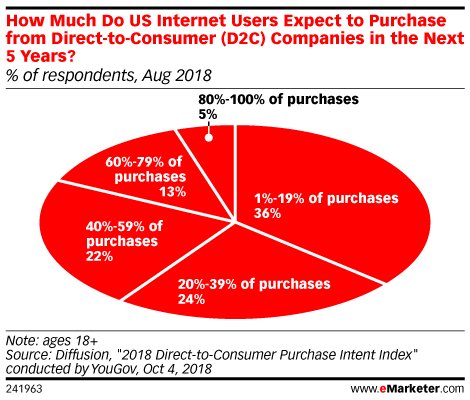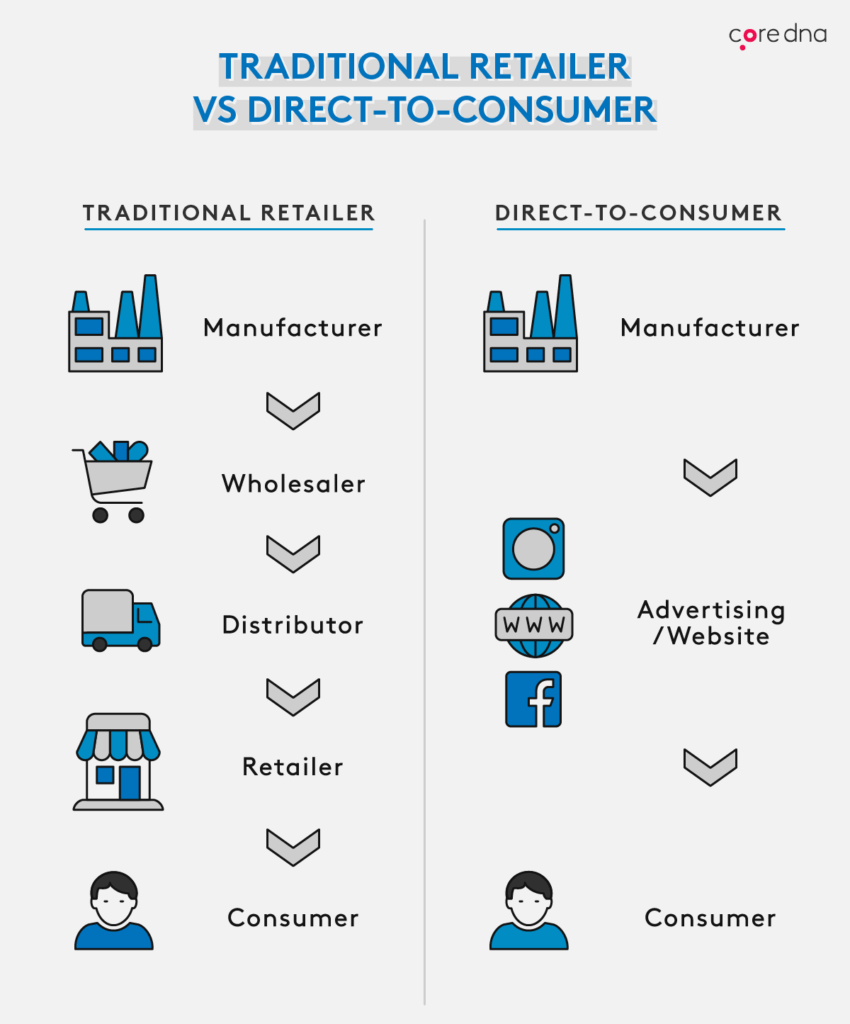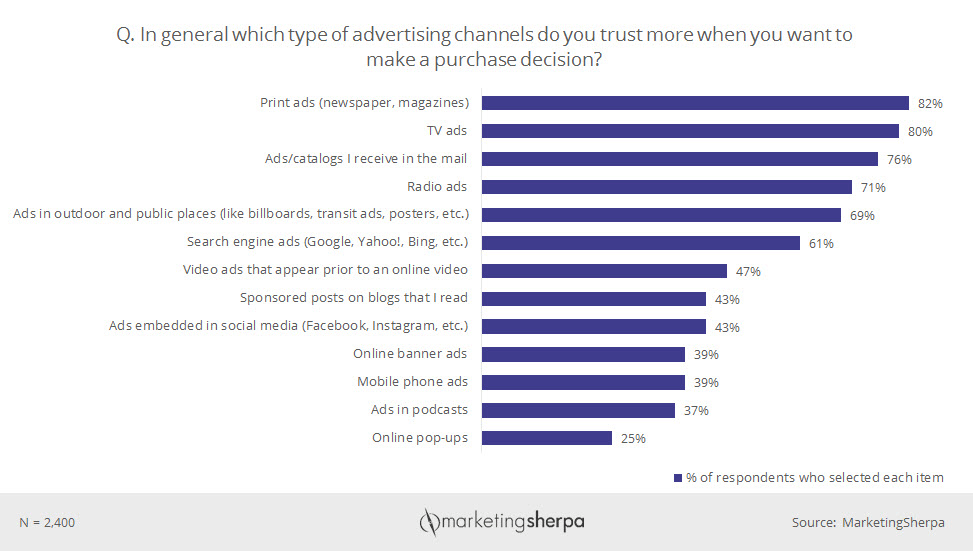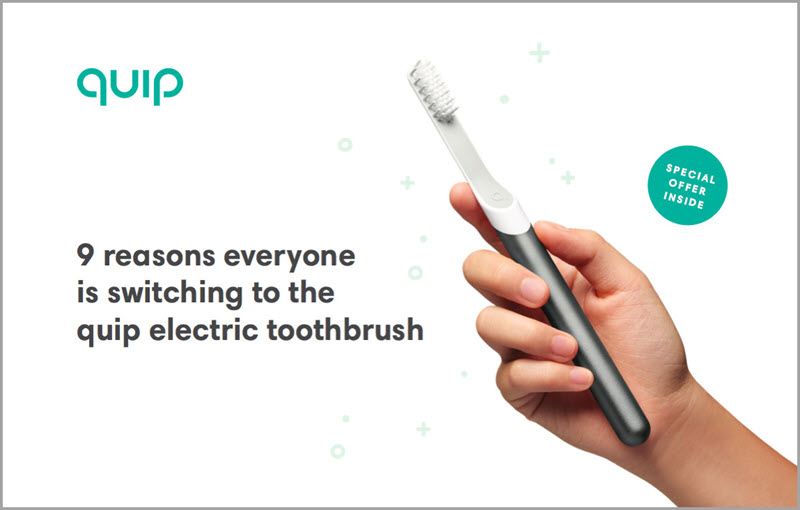Do you want to add a high response, data-driven and reliable channel to your direct-to-consumer marketing strategy?
Direct mail could be your best bet.

The direct-to-consumer (D2C) industry has seen rapid growth, disrupting traditional retail stores. Often, D2C brands are digital natives — born out of the rise of the internet and eCommerce — interested in the increased autonomy and higher margins that a D2C approach provides.
It’s an attractive business model for companies and consumers alike. An early 2019 report from eMarketer showed that D2C brands have seen their web traffic double in the span of two years.
D2C brands have been able to disrupt behemoth retail markets like beauty and furnishings. The vitamin and supplement market is increasingly driven by D2C brands.
What about high-ticket items? Even luxury products and expensive consumer tools and equipment are seeing direct-to-consumer growth.
Direct-to-consumer marketing strategies also are uniquely suited to benefit from direct mail marketing.
From 2015 to 2016, direct mail customer response rates increased by 43%. (Source: ANA/DMA Response Rate Report 2018) @ANAmarketers
We’ve extensively covered how direct mail marketing can benefit B2B organizations. For many of the same reasons, the channel is also effective for D2C brands.
In fact, a recent survey indicated that 63% of direct-to-consumer brands are using direct mail.
There are similarities in how B2B and D2C brands think about their marketing, including a focus on buyer personas and journeys, along with a reliance on automation and technology to drive marketing performance.
These are all reasons why D2C brands are investing in direct mail, especially when driven by newer direct mail automation tools.
The Direct-to-Consumer Marketing Strategy Eliminates Layers

Source: CoreDNA
Many direct-to-consumer brands are the offspring of the eCommerce boom. They watched as eCommerce companies were able to come in and displace traditional retail stores at a fraction of the startup cost, and started wondering why they needed to play the game traditionally.
Why shouldn’t they enjoy those same advantages, while cutting out eCommerce middlemen like Amazon and others?
As a result, most direct-to-consumer marketing strategies start with a heavy focus on digital channels. It’s what they’re familiar with, and they know they can scale up quickly.
The problem? Digital marketing channels are becoming increasingly competitive. Sure, D2C brands have a leg up in that they can keep costs down compared to traditional retailers, but with more D2C brands vying for the same audiences, they are quickly finding that customer acquisition costs are skyrocketing nearly 50% in the past five years!
Naturally, many D2C brands turn to more traditional advertising channels, where competition is lower and they have a chance to build stronger brand awareness. What they often find is a surprisingly high ROI compared to digital channels, especially with direct mail.
In fact, in a recent study by the USPS, D2C companies were the most likely to coordinate direct mail with digital channels of any category!
D2C Brands Test Continually, Including With Direct Mail

Because direct-to-consumer brands have built expertise in data-driven, digital customer acquisition, they tend to focus on continually testing their channels for effectiveness.
Direct mail is considered the original data-driven marketing channel, with well established processes for testing audiences, offers and creative.
Learn More About Direct Mail Testing Best Practices
At Postalytics, we’re seeing many D2C brands testing different variables while using various postcard sizes, particularly for acquisition campaigns.
These brands are typically following creative direction from what they’ve learned online, with large, powerful images and bold headlines.
They’ll often test audience segments and offers using a single postcard size, then test their winners against other sizes.
D2C brands will also take advantage of recent advances in direct mail tracking and analytics, so that they can develop a precise understanding of their delivery and response metrics.
Explore Longer Form Letters For Expensive D2C With Long Sales Cycles
High ticket D2C products lend themselves well to longer form, more creative direct mail copywriting techniques.
Formats like sales letters provide the personal touch and ability to connect in a way that other formats don’t. We’ll see these clients experimenting with longer form materials like white papers, testimonials, and brochures.
Finding the right message and format that connects with your audience is a huge perk, particularly due to the scalability that direct mail offers.
Segmented Campaigns Provide Pinpoint Audience Control

One of the true strengths of direct mail is that mailing lists can be compiled from a variety of data sources, and continuous testing can reveal the types of offers that work best with various segments of a D2C audience.
There are 3 general categories of direct mail lists, and all 3 can be used by D2C brands for various types of targeted direct mail campaigns:
- Internal or “House” lists, often from a company’s CRM or CDP
- Response Lists, with data from membership organizations, publications and companies that track purchasing behavior
- Compiled Lists, with data from publicly available data sources that provide geographic and demographic targeting
Check Out The Ultimate Guide To Direct Mailing Lists
Response and compiled lists are often used for lead generation efforts, while house lists are often used to drive mid and lower funnel activities, as well as loyalty/win-back campaigns.
Because of the ready availability of mailing lists from various sources, AND the ability to test audiences on a continual basis, direct-to-consumer marketers are able to zero in on very precise audiences as they develop a deeper understanding of what motivates their buyers.
What’s the net impact of such focused targeting?
Higher response rates and lower costs per response.
The way that D2C brands develop their direct mail audiences is the opposite of a “spray and pray” marketing channel. Learn more in “How To Find The Best Consumer Mailing List For Direct Mail Campaigns”.
Consumers Trust Direct Mail

For better or worse, consumer trust in digital advertising is very low. Adoption of ad blocking technology has skyrocketed, and scandals such as the Facebook/Cambridge Analytica disaster have tainted consumer’s perceptions of digital ads.
At the same time, new data indicates that consumer trust in direct mail marketing remains very high. In fact, a Marketing Sherpa survey discovered that 76% of consumers trust direct mail when it comes to making purchasing decisions.
Older customers have been receiving direct mail promotions for their entire life, and so their trust makes sense. The surprising thing is that millennials have also been shown to respond well to direct mail ads.
Direct mail gives you the opportunity to reach those audiences through a medium that they trust.
An Multi-channel Approach to Direct-to-Consumer Marketing
We’ve written extensively about how direct mail fits seamlessly into multi-channel marketing approaches. The same is true for direct-to-consumer marketing.
The sales cycle for D2C products can be long. Consumers want to research. They want to weigh the options that they have in front of them and make a decision that feels right for them.
That means that you’ll need to facilitate them throughout the decision-making process. You have to stay top-of-mind, or your competition will.
For that reason, you should seek to engage your audience through any channel that they see as relevant and trust. If your audience is on Facebook, you should engage with them there. If they are receptive to direct mail marketing, there is no reason why it shouldn’t be part of your broader direct-to-consumer marketing strategy.
Direct mail marketing has a place throughout the full sales funnel for D2C products:
- Top of the funnel. Deliver information that builds awareness. Familiarize your audience with your product. Appeal emotionally.
- Middle of the funnel. Educate your audience. Connect benefits to features. Appeal to your audience’s specific needs.
- Bottom of the funnel. Sales letters. Product comparisons. Product specs. Help get your customers over the hump as they near their final buying decision.
Too many brands mistakenly view direct mail as a channel that is only suited for transactional, impulse purchase marketing campaigns.
The truth is that direct mail provides a personal way to connect with prospects at all points in the funnel.
Consumers Respond to Direct Mail
Source: Neil Patel
Consumers know and trust direct mail. They like that it is tangible and that they can view and read them on their terms, when and how they like. They like that direct mail ads provide a more personal approach, particularly if the brand makes an effort to stand out from the noise.
Here are a few stats that show just how receptive consumers are to direct mail:
- 98% of consumers bring their mail in the day that it is delivered.
- 70% of Americans say that mail is more personal than the internet.
- 79% of consumers will act on direct mail immediately.
The proof is in the pudding. Direct mail connects with targeted consumers. They trust it. Which is why more direct to consumer marketing teams are adopting direct mail as a larger part of their marketing strategy.
Direct Mail Campaigns Can Be Highly Personalized

Personalization is the key to successful marketing, and particularly so for direct-to-consumer audiences.
These consumers want to feel catered to. Your product is a big investment for them. They want to know that you understand their situation and that the recommendations that you offer are genuinely in their best interest, and not out of some misplaced drive to secure their sale.
You can’t achieve that without personalization.
- 91% of consumers are more likely to shop with brands who provide relevant offers and recommendations.
- 80% of shoppers are more likely to buy from brands that offer a more personalized experience.
- Consumers are 40% more likely to view items that are shown to them based on information that they’ve provided to a brand.
You can inject consumer data into your direct mail campaigns in the same way that you would through digital channels.
Any data point that you can collect about your prospects — name, age, location, address, phone number, etc. — can be used to personalize your direct mail campaigns.
Postalytics was built from the ground-up for in-depth personalization. Our platform makes it easy to speak directly to your consumers and foster awareness with your brand in a personal way.
Modern Direct Mail Campaigns Are Data-Backed

There is a mistaken belief that direct mail as a channel is completely isolated. People believe that it can’t be reliably connected to your other marketing campaigns. They often think that managing direct mail campaigns will be more work — they envision themselves opening envelopes and manually entering customer data into their CRM.
That couldn’t be farther from the truth.
Modern direct-to-consumer direct mail marketing campaigns can be tracked, split tested, optimized, and analyzed on nearly the same level as any digital campaign.
You can see who engaged with your offer through personalized URLs. You can track what they did once they reached your website. You can see conversion rates, engagement levels, and anything that any modern digital analytics system would provide.
Further — Using Postalytics — you can connect your D2C direct mail campaigns directly to your CRM or other tools so that you never have to worry about manual data entry.
Opportunity to Stand Out

Direct mail offers the ability to stand out in a way that is just not possible through cluttered digital channels, where everyone is following the same playbook.
It isn’t trying to grab attention on a crowded website or email inbox that your customers are reading for other purposes and likely to gloss over.
Direct mail volume has fallen about 25% in the past decade, according to the USPS. Savvy marketers are using this to their advantage.
Going the extra mile with a direct mail campaign immediately stands out to your audience. When you create a compelling offer, deliver something genuinely valuable, or use some creative way to catch and hold their attention — consumers notice. They appreciate a more personal touch.
A Physical, Tangible Experience

A great direct mail ad grabs attention and pulls people out of their busy lives, even if only for a second.
The tangible nature of direct mail advertisements naturally means that engaging with the ad requires the reader’s attention.
They’ve already invested in carrying the mail in, possibly opening up the envelope, and scanning the creative to see if it is something worth further review. That makes direct mail prospects more likely to engage with your full ad, so long as you can hook them early with powerful offers and creative.
Direct Mail Complements Direct-to-Consumer Marketing
Direct mail is too natural of a choice for D2C brands to ignore. It allows you to stand out from the crowd, deliver a personalized experience, and reach precise audiences with authentic experiences.
About the Author

Dennis Kelly
Dennis Kelly is CEO and co-founder of Postalytics, the leading direct mail automation platform for marketers to build, deploy and manage direct mail marketing campaigns. Postalytics is Dennis’ 6th startup. He has been involved in starting and growing early-stage technology ventures for over 30 years and has held senior management roles at a diverse set of large technology firms including Computer Associates, Palm Inc. and Achieve Healthcare Information Systems.
